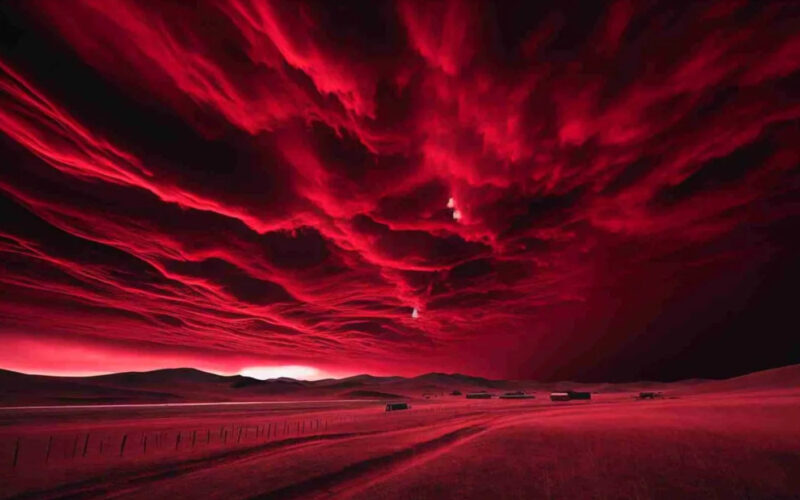<p>December 06, 2023 – In an extraordinary celestial display, Mongolia recently bore witness to a rare auroral event that bathed its skies in a deep, blood-red hue, captivating onlookers and defying the conventional palette of the Northern Lights.</p>



<p>Traditionally, auroras, commonly known as the Northern Lights or Aurora Borealis, manifest closer to the poles, predominantly exhibiting shades of green. However, Mongolia experienced an unparalleled phenomenon as the auroras adorned the heavens in a striking crimson hue, courtesy of a substantial solar storm&#8217;s impact on Earth.</p>



<p>The unique red hue is a consequence of the interaction between solar particles and oxygen at exceptionally high altitudes, specifically beyond 241 km above the Earth&#8217;s surface, where the atmosphere is notably sparse.</p>



<p>The distinct red observed is considered one of the rarest colors in the Northern Lights spectrum, closely associated with periods of heightened solar activity. The ongoing solar storm responsible for this celestial spectacle resulted from multiple coronal mass ejections (CMEs) from the Sun, initiating on November 27, 2023, with the initial wave reaching Earth on November 29.</p>



<p>The red auroras materialized as a result of solar particles colliding with oxygen molecules at elevated altitudes. Due to the lower density of oxygen at such heights, these collisions occur less frequently, leading to the emission of red light instead of the more commonly observed green. This phenomenon mirrors the operation of neon lights, where excited gas atoms emit photons of light upon returning to their ground state.</p>



<p>Historically, red auroras have been linked to potent geomagnetic storms, such as the Carrington Event of 1859, the most intense solar storm on record. During this event, red auroras graced skies as far south as the Caribbean and Mexico, creating a luminous night mistaken for morning by singing birds.</p>



<p>Mongolia&#8217;s encounter with the red aurora offers scientists a unique opportunity to study the effects of solar storms at lower latitudes. Beyond its visual allure, the celestial spectacle serves as a reminder of the Sun&#8217;s immense power and the potential impact of solar weather on our technologically dependent society.</p>



<p>As the solar cycle progresses towards its predicted peak in 2024, skywatchers can anticipate more displays of auroral beauty. Yet, few may rival the intensity and rarity of Mongolia&#8217;s blood-red skies, marking a celestial event destined to be etched in memory for its exceptional and awe-inspiring nature.</p>

